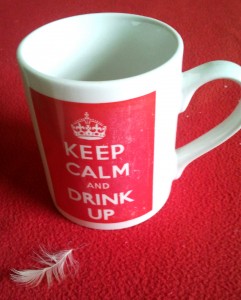‘I was deeply sceptical about the existence of paranormal phenomena, and had confined them to a mental file-drawer labelled “not true, but fun to talk about at parties”’ (Wiseman, 2011. 3).
Richard Wiseman is a highly successful psychologist, with a background in magic, and perhaps has a different set of ethics governing his approach to his research. As a social scientist however I believe that retaining an element of respect is a vital part of what I do. Reading Wiseman’s words in this quote make me feel uncomfortable because he is very dismissive and judgemental.
During my recent fieldwork I had direct firsthand experience of an ‘otherworldly’ presence – or what Wiseman might dismiss as a ‘paranormal phenomenon – and the impact of such an experience. I was told by one of the mediums I have been interviewing for my research that I would soon face a challenging meeting with a difficult senior manager. But the good news was that his spirit guide had given him a message for me. I was to look over this person’s left shoulder and I would receive a sign that spirit were looking out for me and that everything would be ok.
 When the meeting actually took place – several hundred miles from the location of the medium, in the private office of a member of staff on a university campus that the medium had never visited – I looked over the manager’s shoulder and received the ‘sign’. There on the shelf directly above his left shoulder was a lone mug carrying the slogan ‘Keep Calm and Carry On’. It was sound advice in the circumstances, because the manager was antagonistic, so it helped me psychologically to deal with that successfully.
When the meeting actually took place – several hundred miles from the location of the medium, in the private office of a member of staff on a university campus that the medium had never visited – I looked over the manager’s shoulder and received the ‘sign’. There on the shelf directly above his left shoulder was a lone mug carrying the slogan ‘Keep Calm and Carry On’. It was sound advice in the circumstances, because the manager was antagonistic, so it helped me psychologically to deal with that successfully.
Regardless of the fact that the ‘message’ was somewhat vague, and the mug on the shelf a very mundane physical object, it seemed to me that in that moment I had experienced something of the sensation of what it must be like to live in a world and feel spirit ‘there’.
I will never know how the precise circumstances behind this ‘coincidental’ event might have come to be, but it reinforced in my mind as a researcher that I have to take these experiences, and their impacts on practitioners’ lives, seriously. It also told me something very useful about how as social scientists we go about our fieldwork. Had I relied solely on observing the medium giving similar messages to other people I wouldn’t have had the opportunity to spontaneously experience something decidedly otherworldly in the way that he and my other research participants routinely do.
Leaving aside Wiseman’s question of what might be classified as ‘real’ and what might be consigned to a drawer marked ‘not true’, as Sociologist Charles Emmons said on the Anomalous Experiences Research Unit’s online forum: ‘even to the extent that anomalous experiences are not “real”, they can still be real in their consequences, which is why no social scientist should ever condemn the study of any such subject’.
Certainly after my experience with the ‘Keep Calm’ mug, I’m ready to admit that as critical social scientists we can never really file away anything with complete certainty!
If you want to read more about my reflections on social science methods and otherworldly encounters go to Methodological Innovations Online.
Charles Emmons is Professor of Sociology, Gettysburg College, USA, and co-author with Penelope Emmons of Science and Spirit and Guided by Spirit
Reference: Wiseman, R. (2011) Paranormality: why we see what isn’t there. London: Macmillan.
